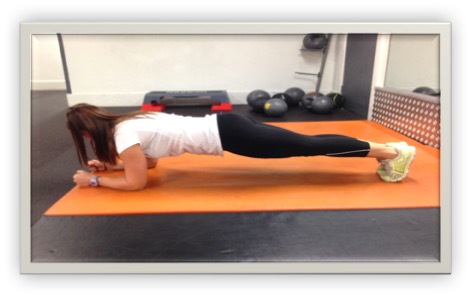The first in our series of Gym Jargon Busting Blogs - looks at your core muscles, where are they exactly, what do they do and why should we be exercising them. This is followed up with 5 of our highly recommended exercises to get your core stronger.What is your core?The core is made up of a range of stabilising muscles, which ensure correct posture in your daily life and during exercise; they extend far beyond your Abs. Major muscles include: the pelvic floor muscles, diaphragm, transversus abdominis, multifidus, internal and external obliques, rectus abdominis and the erector spinae. The Abs are only part of the equation!
You may be surprised to learn that the common ‘sit up’ is not the most effective action to get the most from your core. In fact, the Rectus Abdominis (your 6 pack muscles) should be the last muscle group to be worked, since these are the least relevant to really improving core strength.
If people spent less time doing sit ups and more time training ALL the true core muscles during every workout, the population would have a lot stronger, healthy bodies and a lot fewer back problems.Why is this important?
Why is exercising your core so important?Exercising the core is an important part of a well put together fitness routine. However, aside from the occasional push up or sit up, the core muscles are largely neglected. Apart from serving as the protectors of your abdominal organs, it’s involved in most full body functional movements.
Back pain is often a common side effect to having a weak core and in many cases strengthening in this area will improve both your posture and remove a large number of complaints with back pain.
Everyday things like putting on your shoes/socks, picking items off the floor, sitting down and standing back up and turning around, are all things we take for granted but with a weak core these simple tasks can become an effort. Jobs that involve lifting, twisting and standing all rely on core muscles, therefore strengthening this area will have huge benefits in your normal day to day tasks.
Achieving a strong core can be done with many different exercises. Here we have picked out 6 of our favourites, which you can do in the gym.If you need any advice on the exercises below, before attempting them please ask one of our fully qualified and friendly gym team.

The plank
Remember;
- Keep your elbows underneath shoulders
- Feet together
- Arms shoulder width apart
- Maintain a straight line from head to toe

Cable rotations:
- Stand with your feet pointed straight ahead and placed shoulder-width apart.
- Keep your knees slightly bent.
- With arms extended, hold a cable in both hands in front of your chest.
- Rotate your arms and torso away from the weight stack, keeping your feet in place.
- Hold the end position for the desired time and then return to the starting position. Repeat in the other direction.

Hyperextension:
- Lie face down on a hyperextension bench, tucking your ankles under the footpads.
- Adjust the upper pad if possible so your upper thighs lie flat across the wide pad, leaving enough room for you to bend at the waist.
- With your body straight, cross your arms in front of you or behind your head. This will be your starting position.
- Start bending forward slowly at the waist as far as you can while keeping your back flat whilst inhaling.
- Slowly raise your torso back to the initial position as you exhale.

Swiss ball crunch:
- Lay on the ball so that your back is arched over it, with your feet firmly on the floor and cross your arms over your chest.
- Engage your core to control your lower back, just as you would if you were doing this on the floor, and then crunch your shoulders up towards your hips.
- Breathe out as you crunch, which will be until your upper body is roughly straight, and hold this for a second to get an isometric contraction.
- Slowly lower yourself back down over the ball until you feel your shoulder blades touch.


TTX rollout:
- Adjust the TRX straps to mid-length.
- Start with feet hip width apart or together to make it more difficult. Reach your arms forward at shoulder height to create tension in the straps.
- Maintaining a plank position slowly extend the arms forward and up while keeping the shoulders engaged. Go to a point where you can still maintain proper form while challenging the core.
- Maintaining the plank position bring the arms back towards the body and return to starting position.

And finally the Kettlebell windmill:
- Rotate the feet to the left
- Hinge the hip to the right and load the straight back leg
- While keeping the front foot soft, rotate the t-spine and reach toward the ground whilst inhaling
- Eyes should be on the overhand arm
- Go as far as your mobility allows without your lower back rounding
- Squeeze your glute and stand back up while exhaling.
![]()
![]()
![]() blog
blog![]()
![]()
![]() blog
blog






